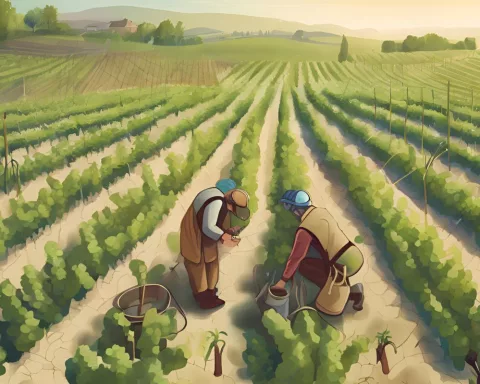The Western Cape is experiencing a surge in tourism, with Cape Town International Airport reporting a remarkable increase in passengers compared to the same period in 2022. The tourism industry benefits not only the economy but also local communities by generating job opportunities and fostering cultural exchange. As the region continues to gain popularity, sustainable tourism development is crucial to preserve natural and cultural resources and maintain its appeal for future generations.
What is the current state of tourism in the Western Cape?
The Western Cape is experiencing a significant surge in tourism, with Cape Town International Airport recording over 6.8 million two-way passengers between January and September 2023. Wesgro reported a remarkable 60% increase in international two-way passengers and a 14% increase in domestic two-way passengers compared to the same period in 2022. The thriving tourism industry is beneficial not only to the economy but also to local communities. The government’s objective is to enable the continued growth of this vital sector to stimulate economic growth and create jobs for the province’s residents.
The Western Cape is witnessing a significant tourism boom, with Cape Town International Airport (CTIA) recording over 6.8 million two-way passengers (international and domestic) between January and September 2023. This award-winning airport has seen a remarkable 60% increase in international two-way passengers and a 14% increase in domestic two-way passengers compared to the same timeframe in 2022.
Wesgro, the Western Cape Government’s (WCG) trade, investment, and tourism promotion agency, reported these impressive figures. Mireille Wenger, the Minister of Finance and Economic Opportunities, expressed enthusiasm regarding the growth and expects it to surpass previous summer seasons.
To address safety concerns for hikers in [Table Mountain National Park](https://capetown.today/table-mountain-a-precious-gift-to-cape-town/) and Lion’s Head, stakeholders in the tourism and hospitality sector, as well as partners responsible for safety and security, are working together.
Key Findings from the September Tourism Report
The September tourism report revealed several crucial insights:
-
George Airport experienced a 3% year-on-year increase in two-way passengers, totaling 576,347 between January and September 2023.
-
Cape Town registered 621,238 tourist arrivals via air, with 89% originating from overseas markets and 11% from the African continent.
-
Both total and overseas tourist arrivals via air fully recovered in September 2023 compared to January and September 2019.
-
The United Kingdom leads the list of source markets for air travel to Cape Town, followed by the USA, Germany, Netherlands, and France.
-
Europe remains the largest contributor to tourist arrivals in Cape Town, with six of the top ten source markets stemming from the continent.
-
Eight of the top ten source markets for air travel to Cape Town experienced full recovery between January and September 2023, compared to the same period in 2019, including the UK (105%), USA (142%), Germany (104%), Netherlands (112%), Italy (109%), India (104%), Canada (104%), and Zimbabwe (178%).
-
Footfall at 40 participating attractions across the six regions of the Western Cape reached 571,657 visitors in September 2023, a 23% year-on-year growth compared to September 2022.
In September 2023, the highest year-on-year growth rates were recorded for Groot Winterhoek Wilderness Area (385%), Robben Island (270%), Swartberg Nature Reserve (178%), Keurbooms River Nature Reserve (91%), and Wilderness National Park (72%).
Minister Wenger underscored the province’s dedication to welcoming both international and domestic visitors in the coming months. The government’s objective is to enable the continued growth of this vital sector to stimulate economic growth and create jobs for the province’s residents.
Tourism Expansion and its Effect on Local Communities
The thriving tourism industry benefits not just the Western Cape’s economy but also local communities. The increasing number of tourists visiting the region boosts demand for various services, such as accommodation, food, and entertainment. This demand generates job opportunities for residents and encourages the growth of small businesses.
Furthermore, the influx of tourists can foster cultural exchange and appreciation, as visitors introduce their customs, traditions, and perspectives. This exposure can enrich the lives of the local population and promote understanding and tolerance among diverse groups.
Additionally, a robust tourism sector can result in improvements in public infrastructure, like roads, parks, and recreational facilities. These enhancements benefit not only visitors but also contribute to the overall quality of life for residents.
Promoting Sustainable Tourism Development
As the Western Cape continues to gain popularity as a tourist destination, it is crucial to prioritize sustainable tourism development to preserve the region’s natural and cultural resources. This can be achieved through responsible planning, encouraging eco-friendly practices among tourists and businesses, and implementing conservation initiatives.
By focusing on sustainability, the Western Cape can maintain its appeal and attractiveness for future generations while providing economic opportunities and enhancing the quality of life for local communities.
In summary, the Western Cape’s tourism boom attests to the region’s exceptional offerings and the collaborative efforts of stakeholders to promote and develop this vital industry. The continuous partnership between governmental agencies, the tourism sector, and local communities will be essential in ensuring that the Western Cape continues to prosper as a leading destination for both international and domestic travelers.
1. What is the current state of tourism in the Western Cape?
The Western Cape is experiencing a significant surge in tourism, with Cape Town International Airport recording over 6.8 million two-way passengers between January and September 2023. Wesgro reported a remarkable 60% increase in international two-way passengers and a 14% increase in domestic two-way passengers compared to the same period in 2022.
2. What are the key findings from the September tourism report?
The September tourism report revealed several crucial insights, including an increase in passenger traffic at George Airport, with 621,238 tourist arrivals via air in Cape Town, and a full recovery in total and overseas tourist arrivals via air compared to 2019. The United Kingdom leads the list of source markets for air travel to Cape Town, followed by the USA, Germany, Netherlands, and France.
3. How is tourism expansion affecting local communities in the Western Cape?
The thriving tourism industry benefits not just the Western Cape’s economy but also local communities by generating job opportunities and encouraging the growth of small businesses. Additionally, the influx of tourists can foster cultural exchange and appreciation and result in improvements in public infrastructure.
4. What are the benefits of a robust tourism sector in the Western Cape?
A robust tourism sector can provide economic opportunities, enhance the quality of life for local communities, and preserve the region’s natural and cultural resources.
5. What is sustainable tourism development, and why is it important in the Western Cape?
Sustainable tourism development prioritizes responsible planning, eco-friendly practices, and conservation initiatives to preserve the region’s natural and cultural resources while maintaining its appeal and attractiveness for future generations.
6. What are some examples of popular tourist attractions in the Western Cape?
Some popular tourist attractions in the Western Cape include Table Mountain National Park, Lion’s Head, Robben Island, Swartberg Nature Reserve, and Wilderness National Park.
7. How is the government supporting the continued growth of tourism in the Western Cape?
The government is committed to enabling the continued growth of the vital tourism sector to stimulate economic growth and create jobs for the province’s residents.
8. What are the top source markets for air travel to Cape Town?
The United Kingdom leads the list of source markets for air travel to Cape Town, followed by the USA, Germany, Netherlands, and France. Europe remains the largest contributor to tourist arrivals in Cape Town, with six of the top ten source markets stemming from the continent.








